
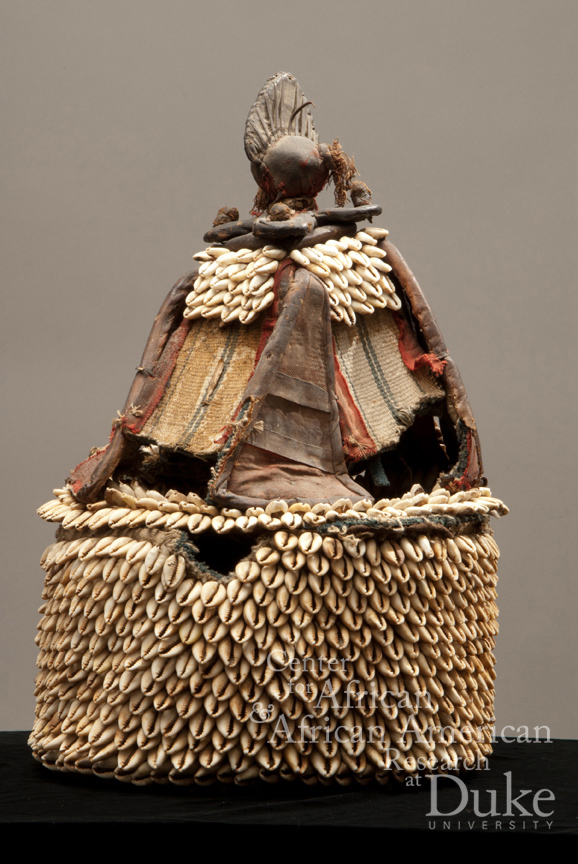
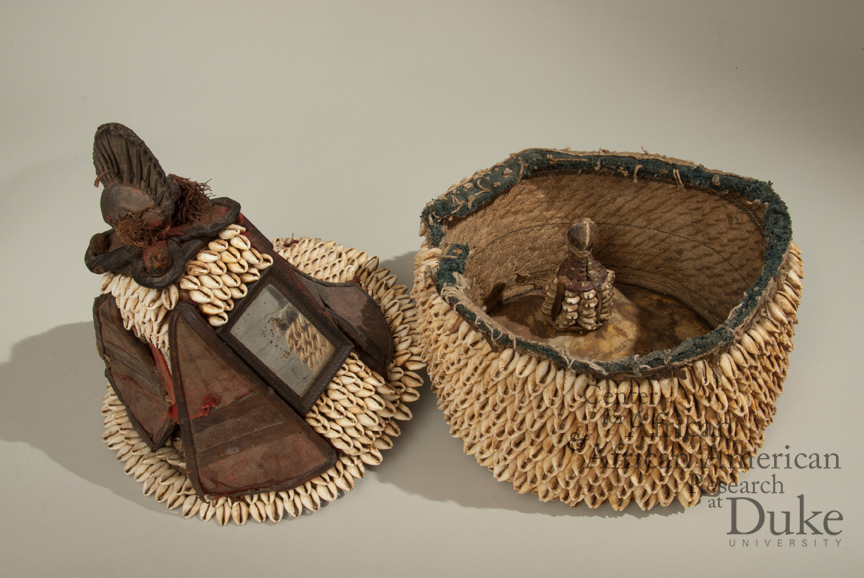
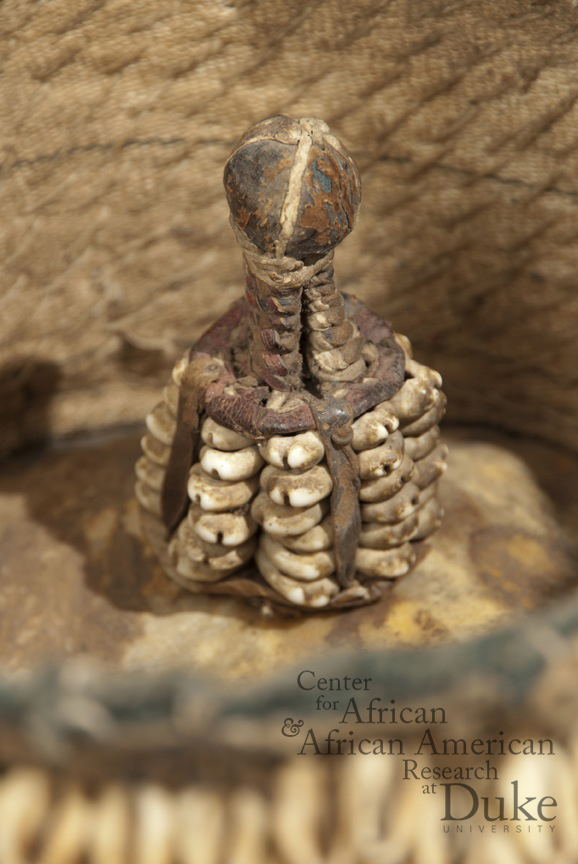
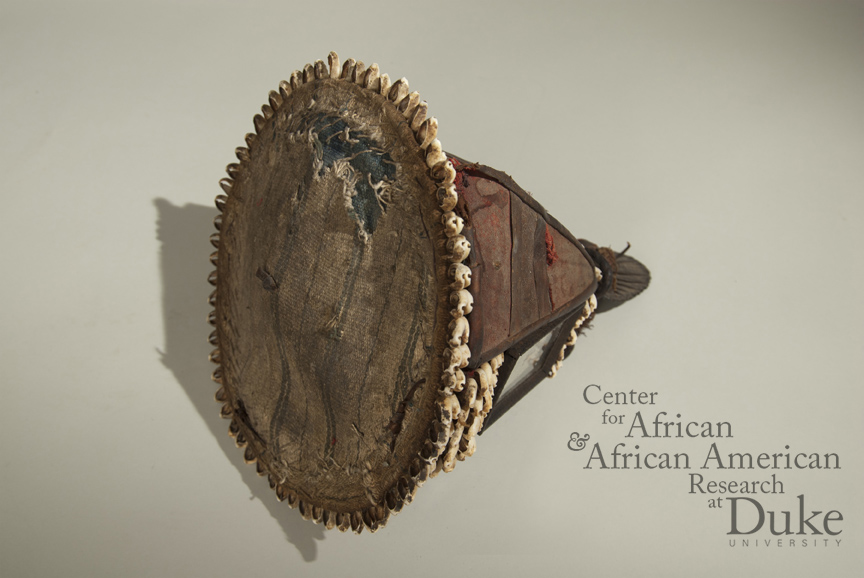
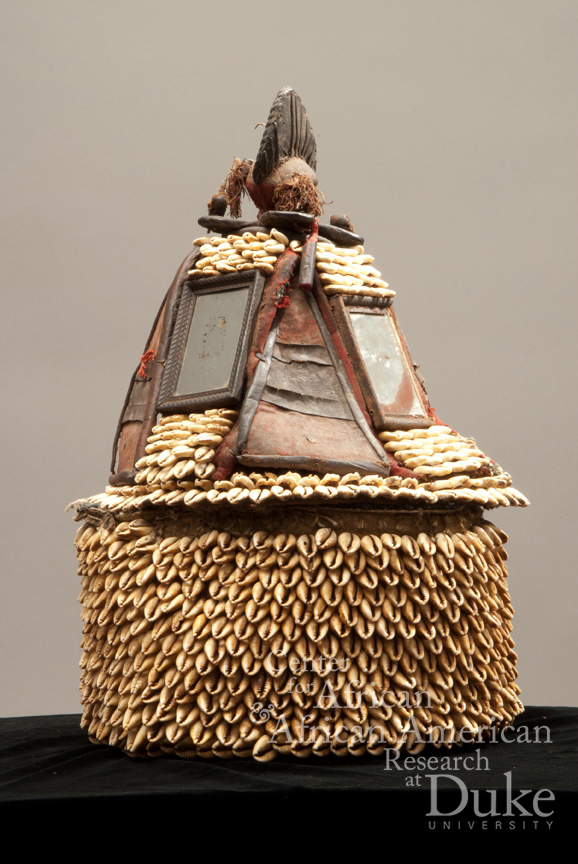
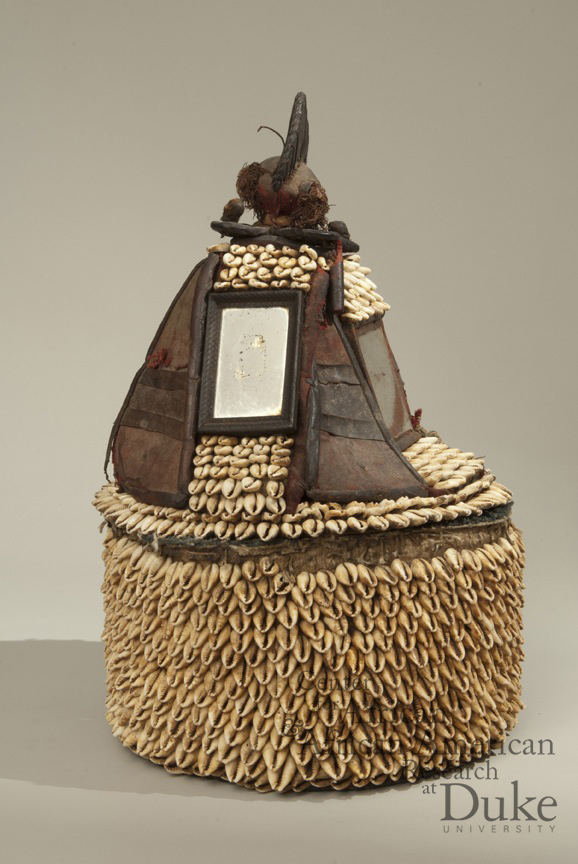
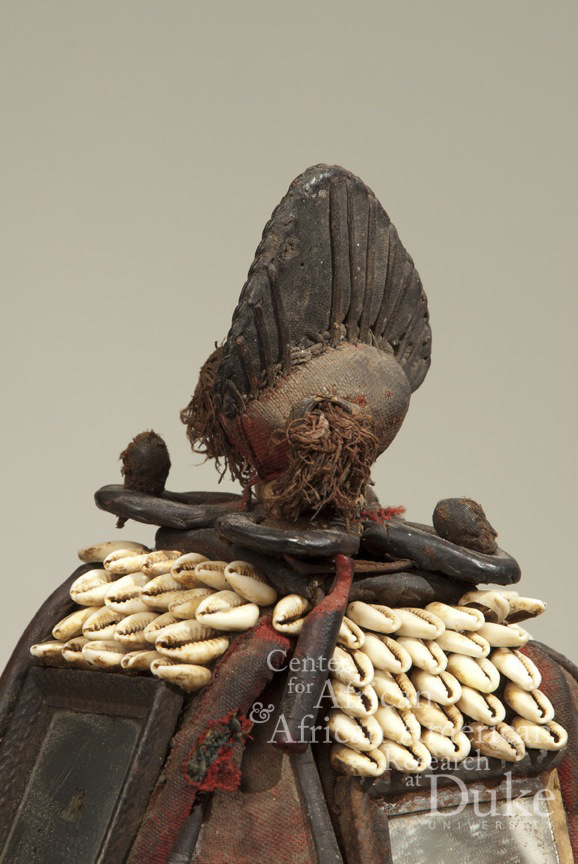
House: 10.5" x 11.0" x 17.0" (with lid) or 10.5" (lid only)
266.7 mm x 279.4 mm x 431.8 mm (with lid) or 266.7 mm (lid only)
Ori: 2.25" x 2.25" x 3.75"
57.15 mm x 57.15 mm x 95.25 mm
This ile ori, literally “house of the head,” is the altar for the veneration of a person’s inner head–the spirit of his or her destiny. Within it sits the orí itself, the actual embodiment of that spirit.
This altar is the oldest of ile ori in the Sacred Arts of the Black Atlantic Collection.
It is covered in cowry shells, an old form of currency that embodies wealth and the spiritual power that arises from the long circulation of currency. The cowry shells on an ile ori are ideally numerous, carefully organized and covering most of the surface of the altar, in a visual prayer for the wealth of the owner and the orderliness of his or her life. are meticulously arranged on most of the surface of the altar. It is made of a base and a cone shaped lid that can be removed. Items that embody hopes for one’s inner head are placed inside the Ile Ori. On top of the conical lid of this item is a round ball of cloth with a fan like projection from the top of it. This is a representation of a head with an elaborate hairstyle known as àgògo. This hairstyle on the ile ori reveals that it belonged to a possession priest, while the tubular red bead (málọjọ̀) reveals that the owner was probably a worshiper of Ọya, the goddess of wind and storm. That worshiper may have been male or female, as both male and female possesion priests of this goddess keep their hair unshorn and may coiff it in this bridal style. Finally, dangling from the side of the cloth head are two pompoms representing earrings hanging from the head, furthering the imagery of a head.
According to Talabi Adedoyin Faniyi, the chief priestess of Ọ̀shun in the city of Òshogbo, the mirrors ‘that once adorned all four sides of the ile ori are intended to empower the ori to see invisible things in every part of the owner’s world and thus to protect the owner from malign people and forces.
Like other ibori, the small object inside the ile ori is also covered with cowries and has a headlike projection from the top.
Contact
Sacred Arts of the Black Atlantic Project, Duke University
Box 90091
Durham, NC 27708
Email
jm217@duke.edu